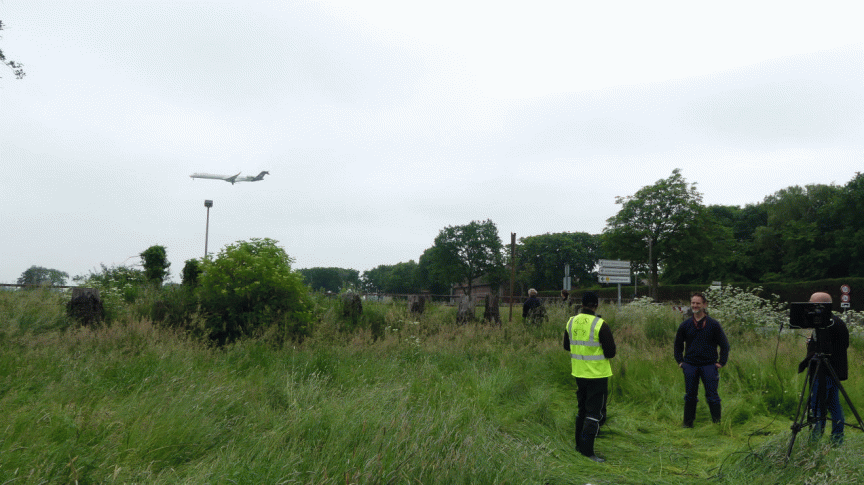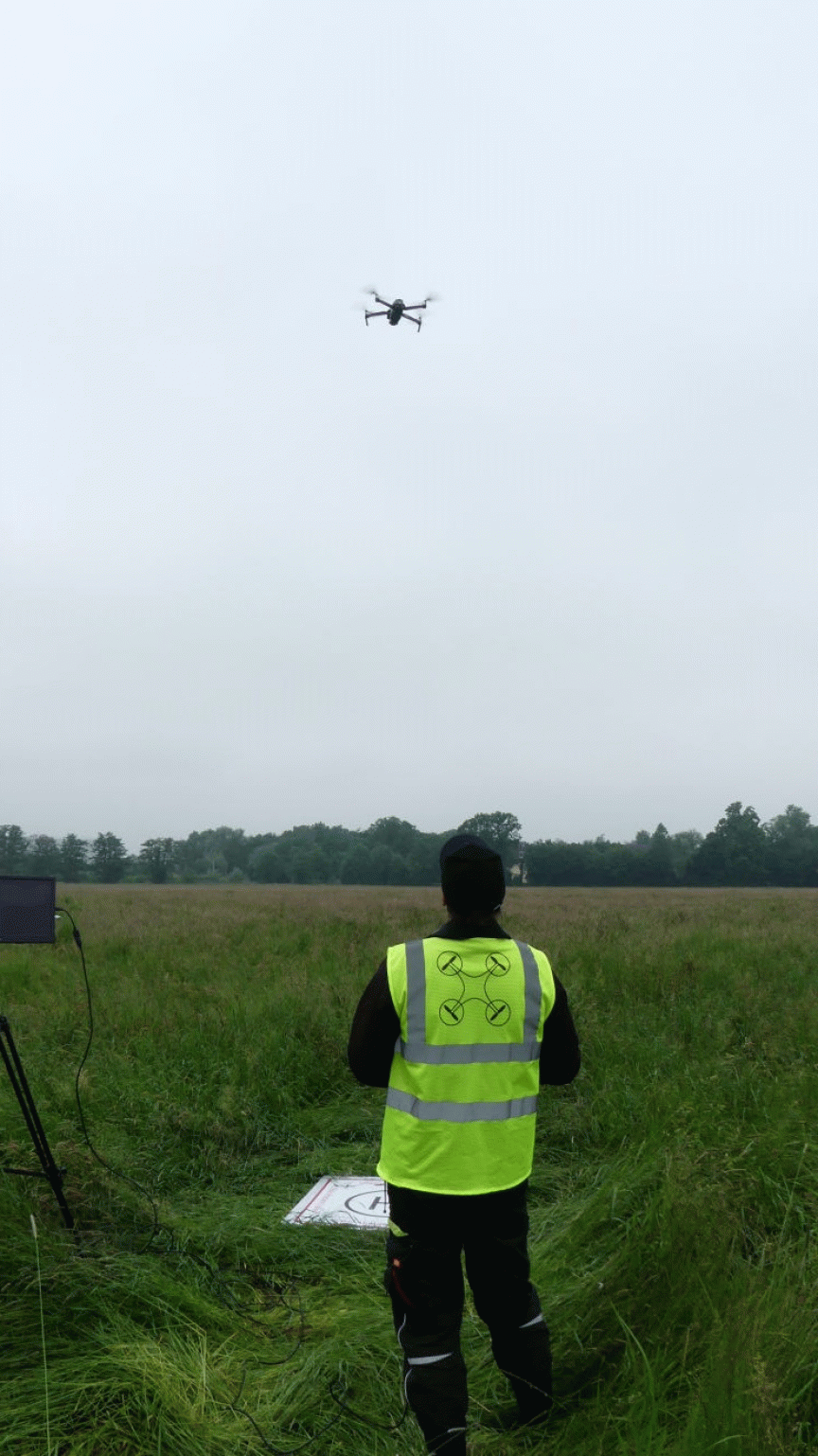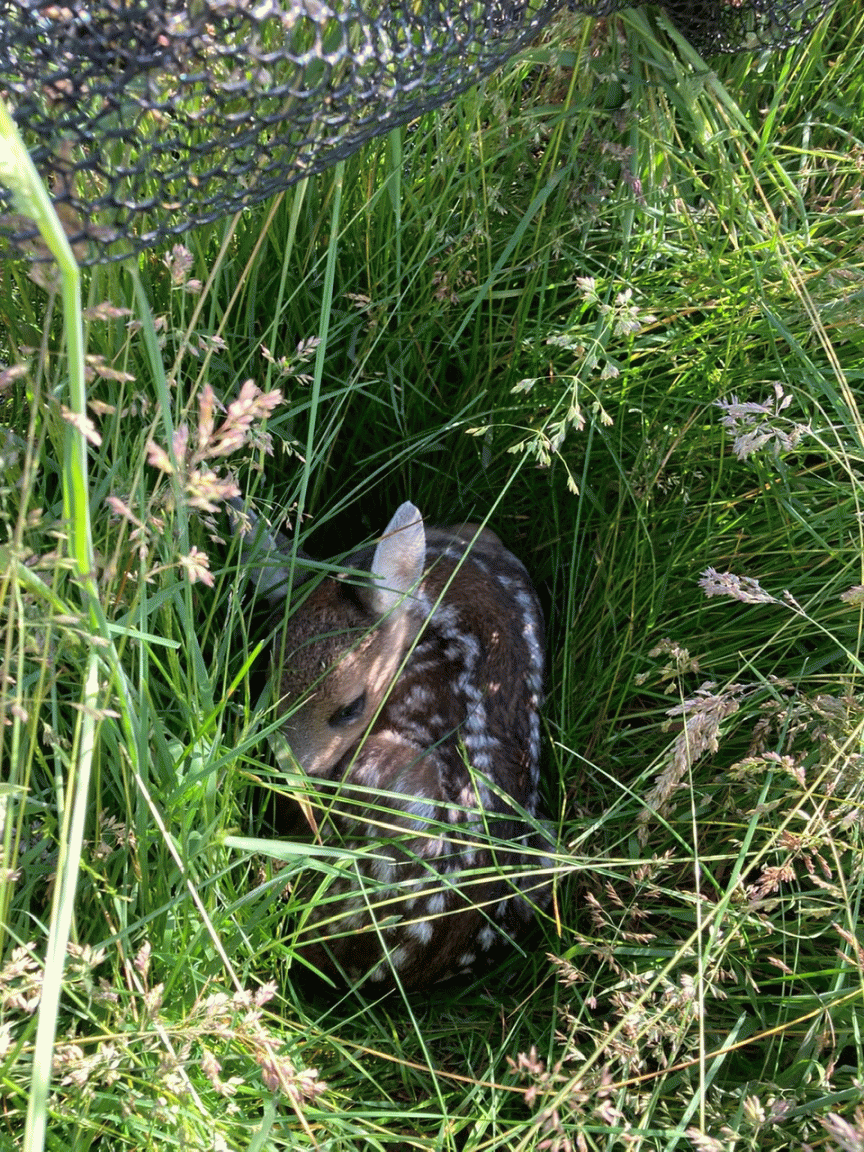"UAS fawn"
 © En-Tra UG
© En-Tra UG The use of copters in no-fly zones is actually unthinkable. However, if you combine a sensible idea with a good network, things that seem unthinkable sometimes become possible. Such as the successful detection of fawns by drone in the no-fly zone right next to Hannover Airport. A pilot project with model character that was implemented within the "Multicopter Region Hannover" business network - and saved five fawns from certain death.
 © En-Tra UG
© En-Tra UG 200 meters from the airport fence, 400 meters from the landing threshold for passenger planes from all over the world: here, in the direct vicinity of Hanover Airport, drones are absolutely prohibited from flying. For farmer Horst Wehde from Isernhagen, who cultivates the land next to the fence of the international airport in the capital of Lower Saxony, this is not usually a problem. But when it comes to searching the meadows for fawns hidden in the tall grass before mowing, things look different. A drone could provide valuable services here.
Directly in the flight path, however, an unthinkable scenario. Or is it? Because what looks like an unsolvable problem at first glance became a spectacular pilot project with model character in summer 2021. This was made possible not least by the excellent cooperation within the "Multicopter Region Hannover", a network of companies, authorities and research institutions set up by the Hannover Region Economic Development Corporation.
En-Tra UG, a project company with extensive experience in the use of drones under complex conditions, played a central role in the conception and implementation of the project.
"We always come into play when things get complicated," explains Christian Walter with a wink, who was instrumental in implementing the fawn detection project near the airport.
The constructive cooperation of all those involved was crucial to the successful planning and implementation. Not least thanks to existing communication channels, it was possible to realize the whole thing in the interests of animal welfare and with a view to future possibilities for commercial drone operations near commercial airports.
In addition to the Landvolk Hannover, the Hannover Region Fawn Rescue Network, farmer Horst Wehde and Christian Walter, the responsible state aviation authority, the people in charge at Hannover Airport, the federal and state police and - last but not least - German Air Traffic Control were also involved in the process at an early stage.
During an initial test about a week before the actual mission, drone pilot Christian Walter used a Mavic 2 Enterprise Dual with an integrated Flir thermal imaging camera. The "target object" was the hunting dog of airport ornithologist Jürgen von Ramin, who waited patiently in the tall grass until he was located by the thermal camera. Meanwhile, Friedrich Wilhelm Bauer from Hanover University of Applied Sciences and Arts, Project Laboratory for Materials in Flight Operations, was in radio contact with the tower at all times.
"We had our own identifier and were part of the general airspace monitoring by the air traffic controllers on duty," Walter recalls.
If an aircraft was approaching or a take-off was scheduled, "UAS Rehkitz" was radioed so that the DJI drone could be landed.
"As we were constantly monitoring the radio traffic, we were already aware of everything that was happening in terms of flight operations," explains the experienced professional pilot. The ADS-B receiver used did the rest to keep us up to date at all times and to interrupt the drone mission in case of doubt. "But about three or four times the request from the tower came before us. Overall, the system worked extremely well."
 © En-Tra UG
© En-Tra UG After a successful test and the final approval of DFS, the police authorities and the airport operator, things got serious a week later. With keen interest from onlookers, the search for fawns began on an area of around 6 hectares in the extension of one of the three runways.
To speed up the visual reconnaissance and make it easier to recognize the heat signature of the animals, a DJI Mavic 2 Enterprise Advanced with its high-resolution thermal camera was used this time. As with the test run, however, the system's inherent no-fly zone had to be deactivated first. This is because in order for the drone to be able to take off near an airport at all, a special activation code must be requested from DJI headquarters. DJI only allows users of its drones to take off in a no-fly zone upon presentation of a corresponding permit.
Once in the air, the drone completed the detection flights in the same way as it does over thousands of other fields throughout Germany during the mowing season. Five fawns were tracked down in Hanover-Langenhagen and saved from certain death. Without the use of UAVs, this would only have been possible with considerably greater effort. And it is questionable whether human search teams would actually have been able to locate all the fawns, which were perfectly camouflaged and cowering motionless in the grass.
"We hope that we have been able to prove with this project that such operations are also possible in the immediate vicinity of the airport and during ongoing flight operations if they are well prepared and implemented in a disciplined manner," explains Christian Walter with satisfaction. "The whole thing could therefore also serve as a model for other airports in Germany." However, German air traffic control naturally has the final say in this matter.
However, the "Multicopter Region Hannover" is well equipped to search for fawns by drone before the next mowing in Langenhagen.
This article was produced in collaboration with Drones magazine, the trade journal for the commercial use of civilian drone technology. www. drones-magazin.de
Contact us
Dr. Michael Merwart
Hanover Region
Economic Development
Department of Economic Development and Employment Promotion


 © En-Tra UG
© En-Tra UG © En-Tra UG
© En-Tra UG © En-Tra UG
© En-Tra UG © En-Tra UG
© En-Tra UG